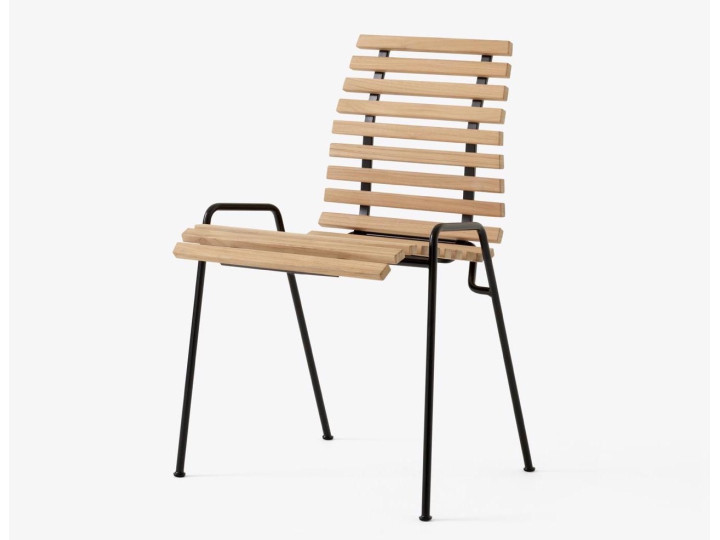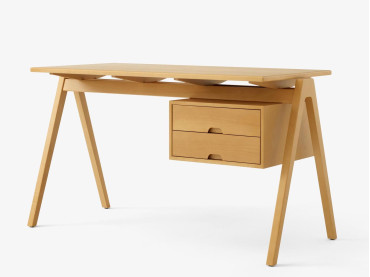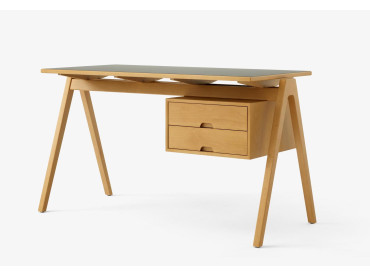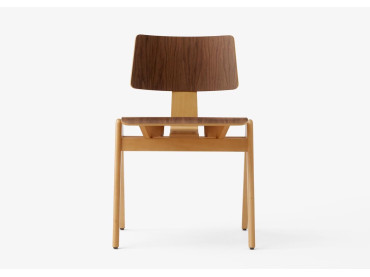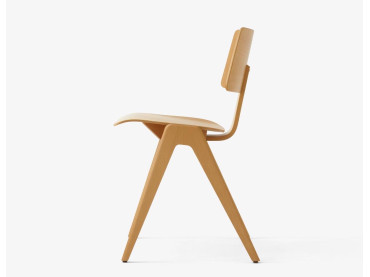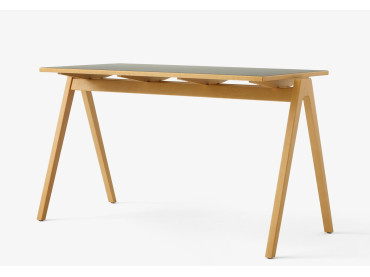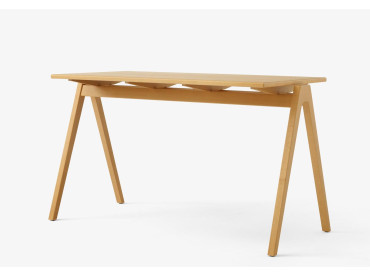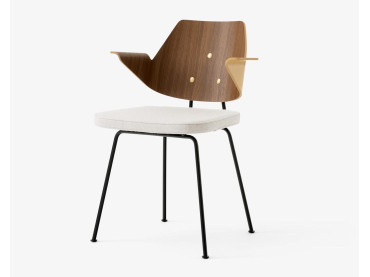RFH Terrace Chair by Robin Day. New edition
-
Robin & Lucienne Day
-
And Tradition
- AT154 On demand. Delivery time 8-10 weeks
RFH Terrace Chair by Robin Day. New edition *Required step
In order to help you to choose, and to receive samples, do not hesitate to contact us by email: contact@galerie-mobler.com or by phone: 01 43 33 20 12
RFH Terrace Chair by Robin Day. New edition
Robin DayThe RFH Terrace Chair was originally designed by Robin Day to complement the outdoor terrace of the Royal Festival Hall in London. Small in proportion and decidedly simple in construction, the Terrace Chair is crafted from a combination of teak slats and a solid steel frame – attributing a distinctive, organic aesthetic.
Certifications
Made using FSC® certified wood, supporting responsible environmental, social and economical management of the world’s forests.
EU Ecolabel certified, validating high standards of durability, circular design, and responsible use of chemicals. Please contact our sales team for a list of EU Ecolabel compliant combinations.
| Year | 1951 |
| Dimensions | H: 79 cm / 31 inch. W: 54.5 cm / 21 inch. D: 52 cm / 20 inch. Seat H: 45.5 cm / 18 inch. Seat D: 40 cm / 16 inch. Weight : 7.75 kg |
| Material | Solid teak, solid high strength steel frame. |
| Style | Classique Neuf |
| Fournisseur | And Tradition |
Robin & Lucienne Day
Robin Day
Born and raised in the furniture making town of High Wycombe, Robin Day (1915-2010) grew up surrounded by timber yards and cabinetmaking workshops. After graduating from Royal College of London, his dream of becoming a furniture designer was put on hold due to the outbreak of World War II. He instead developed his skills making drawings and models for architects, signwriting, producing showcards for fashion boutiques and teaching technical drawing and lettering part-time. He later went on to become an established exhibition designer.
Born and raised in the furniture making town of High Wycombe, Robin Day (1915-2010) grew up surrounded by timber yards and cabinetmaking workshops. After studying at High Wycombe Technical Institute and High Wycombe School of Art, and later working as a draftsman in a local furniture factory, he won a scholarship to the Royal College of Art in London.
During his time at RCA, the product, furniture and interior design departments were in their early development days and as a result, Day carved out his own educational path. After graduating, his aspirations to become a furniture designer were put on hold due to the outbreak of World War II. He instead developed his skills making drawings and models for architects, signwriting, producing showcards for fashion boutiques and teaching technical drawing and lettering part-time. He later went on to become an established exhibition designer, meticulously curating each detail, from installation composition to poster artwork.
In 1948, New York’s Museum of Modern Art put out a call for submissions to its International Low-Cost Furniture Competition. The advert spoke to Day’s democratic approach to design, and thus he entered in conjunction with friend and contemporary, Clive Latimer. Their plywood modular storage system not only won first place in their category, but kick-started Day’s career as a furniture designer. The attention gained led to his partnership with British furniture company Hille (for which he created the Hillestak collection), an expansive commission to design all the furniture for the Royal Festival Hall, and projects for the 1951 Festival of Britain including room-sets for the Homes and Gardens Pavilion which showcased his RFH Lounge and Dining Chairs – both of which now sit in our classics collection.
Day continued to shape the post-war and modern landscape in Britain for the remainder of his life, with a lasting belief that designs such as public seating could contribute to the quality of peoples’ lives. His later work, such as the world’s first Polypropylene Chair and the Toro benches used on the London Underground, endure as iconic pieces of British design.
LUCIENNE DAY
Lucienne Day (1917-2010) stands as an instrumental figure in the realm of British textile design. Renowned for her innovative approach and bold, modernist aesthetic, Day played a pivotal role in shaping the visual realm of post-war textile design.
Inspired by her mother’s love of art, fashion and interior decoration, she studied at Croydon School of Art. She progressed to the textile department of the Royal College of Art, London – where she would meet her husband, British furniture designer Robin Day, at a dance.
Throughout her career Day practised as a freelance pattern designer, retaining control of and insisting on being credited for her work. Among her most significant designs were Lapis, Dandelion Clocks and her breakthrough textile Calyx, which was featured as part of Robin Day’s 1951 Royal Festival of Britain exhibition room-set display alongside his furniture.
Day began her career designing dress fabrics, but, following the international success of Calyx, she was able to concentrate on her chosen field of interiors fabrics, as well as table linen, carpets, wallpapers and even china tableware for Rosenthal. From the mid-1970s she changed direction, creating innovative one-off wall hangings called ‘silk mosaics’.

